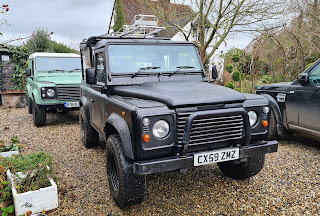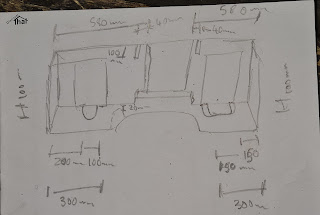I am a fan of 1x, single, chainring drivetrains. However, my interest is in the reduced complexity and the ease of use. I also ride a mountain bike off-road, most of the time. Many road bike users, still prefer double (2x) or even triple (3x) chainrings. I asked myself, am I missing out on something?
Ease of Use
Most, if not all, new users of 2x gearing get confused about when to change between chainrings. There is invariably an overlap between the ratios, so when you drop to a smaller sprocket on the front derailleur, to make going up hills easier, it is often necessary to change up to a smaller sprocket on the rear, to have a gradual change of ratios, rather than a big jump. There is an optimum point to change, but that takes experience to become natural. Obviously, this is even worse with a triple.
Many novice riders, don't change the chainring they are riding on, until they find they can't pedal any more.
With a 1x system, that confusion is eliminated. To go faster, move up the gears, to go up steeper hills, move down the gears. One lever, easy.
Complexity
If you don't maintain your own bike, this is probably not of interest. I personally find that adjusting, especially worn, front derailleurs, can be trouble. At the very least, it's two things to adjust, instead of one.
There's one less lever on the handlebar and one less cable to route.
Weight and Efficiency
I don't race, so I'm not particularly worried about weight but 1x systems are lighter. However, I have read that they are less energy efficient because of more friction, caused by the chain being at a greater angle to some of the sprockets.
I'm not going to go into detail, but here's a link to an article that does some testing:
https://www.cyclingabout.com/drivetrain-efficiency-difference-speed-between-1x-2x/
In short, they conclude that on average a 2x system is 96.2% efficient and that a 1x system is 95.1% efficient. Alternatively, and taking the worst case rather than the average, a cyclist that expends 250W of energy on a 2x system would need to generate 256W using a 1x system, to achieve the same performance.
In that testing, they do not take into account the extra power required to move the additional weight of the 2x system. However, using an online cycling power calculator, I've concluded that the small weight saving, of about 250g, has a negligible effect on the power required. Only about 0.1W.
Gear Ratios
This is the bit I am most interested in comparing. Most articles, that I can find, look at the total quantities of gears and not the individual usable ratios available. The following is an article that I thought covered the basics well: https://www.yellowjersey.co.uk/the-draft/bike-gears-explained/
From time to time I've read comments saying that you can go faster with a 2x system or that you end up just spinning when you get too fast. I was pretty sure that was unlikely because both systems are still limited to either an 11 or 10 tooth highest gear so it is the number of teeth on the chainring that determine the maximum speed regardless of it being a 1x or 2x system.
For my own interest, I wanted to remove the overlapping ratios of a 2x system to better compare to a 1x system. When I was young, people would say a 10 speed bike and the equivalent now, might be a 30 speed bike but you don't actually get that many usable ratios because of the overlap. Modern terminology has changed and it is more often referred to, using the same examples, as 2x5 or 3x10, meaning 2 or three chainrings and 5 or 10 sprockets on the rear cassette. That is a better way of saying it.
For my examples, I've compared two common setups. A 2x10 and a 1x12. It's not easy to compare because, at the moment, it's typically 2x for road bike and 1x for mountain bikes. These two having a different target terrain and therefore different chainrings.
1x mountain bikes, typically have 30 or 32 tooth front chainrings and 11 to 50 tooth (T) cassettes. Having a slower top speed but easier for climbs, compared to a road bike.
2x chainrings usually have no more than a 16 tooth difference between the cog sizes. Say 52T and 36T or 50T and 34T The cassettes for road bikes tend to be a maximum of 11T up to 36T. For mountain bikes, that can be 11T to 42T.
Shimano MicroSpline and SRAM XD hubs can both go as small as 10T sprockets on the cassette.
To compare like for like ratios, I've had to show some less common combinations of chainrings and cassette sizes.
My conclusion is that for my riding, I am not at any disadvantage with a 1x groupset. A 2x10 with a cassette of 11x42, gives the widest range of ratios. However, the more common 2x10 with 11x36 cassette is almost identical to the ratio range of a 1x12 with an 11x50 cassette.
==
Download the spreadsheet:
==

























